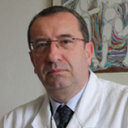Therapeutic options in childhood nocturnal enuresis.
Klíčová slova
Abstraktní
Monosymptomatic nocturnal enuresis, a heterogeneous condition, is frequently treated in children aged >5 years. Of the various treatment options, enuresis alarm has been widely advocated as being effective for treating nocturnal enuresis, while extracorporeal pelvic floor magnetic stimulation for overactive bladder, urge incontinence and urgency-frequency syndrome has not yet been confirmed by controlled studies as primary treatment for monosymptomatic nocturnal enuresis. Desmopressin, an antidiuretic hormone (ADH) analog, or arginine vasopressin (AVP), can resolve primary nocturnal enuresis by decreasing night-time urine production. Enuretic children requiring either desmopressin or desmopressin plus oxybutynin to achieve dryness have polyuria. Tricyclic antidepressants (i.e. imipramine) are used successfully in enuretic children. Although tricyclics and desmopressin are effective in reducing the number of wet nights, most children relapse after discontinuation of active treatment. Combined therapy (enuresis alarm, bladder training, motivational therapy and pelvic floor muscle training) is more effective than each component alone or than pharmacotherapy. Furthermore, desmopressin combined with alarm therapy has a positive effect on enuresis. Pharmacotherapy can provide early relief of enuresis, while behavioral intervention may lead to greater long-term benefits. The positive effect of achieving dry nights with pharmacotherapy can encourage the child to sustain behavioral therapy.


